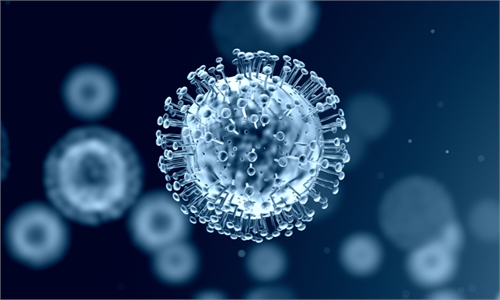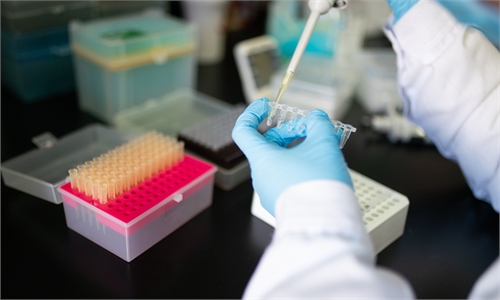
Photo: VCG
The emergence of new virus subtypes will be a normal occurrence, and there is no need to excessively worry, as China will continue to strengthen monitoring of COVID-19 and other respiratory pathogens, said Zhang Wenhong, director of infectious diseases department at Huashan Hospital, Fudan University, regarding the prevalence of the new COVID-19 variant KP.2.
A new COVID-19 variant KP.2 has been spreading globally, while the KP.2 infection remains at an extremely low level in China so far. The main circulating strains in China are linked to the JN.1 lineage, with the top three variants being JN.1, JN.1.4, and JN.1.16 in April, according to Chinese Center for Disease Control and Prevention (China CDC).
Experts believe that the possibility of the KP.2 sublineage becoming the dominant circulating strain in China over the short term is low, as previous epidemic caused by JN.1 has decreased to a low level. The possibility of triggering a new peak of infections is also low due to the very low proportion of KP.2 sublineage infection cases in local cases, said the China CDC on Tuesday.
The novel coronavirus is undergoing continuous mutation, but it is still difficult to break through the Omicron family. Variation is a normal survival mechanism for viruses under host immune pressure, just like the flu virus mutates constantly, said Zhang, according to an article released by Huashan Hospital on Wednesday.
Although there is a possibility of an increase in the proportion of the KP.2 variant, data from the US CDC suggests that, as of May 11, there has not been a significant increase in emergency room visits, hospitalizations, or deaths related to the variant since it was detected in March, despite that the proportion of KP.2 has increased to 28.2 percent in the US, according to Zhang. Therefore, it can be concluded that the clinical risk of the KP.2 variant is limited, Zhang noted.
The KP.2 variant strain was first detected in local cases in South China’s Guangdong Province on March 11. As of May 12, a total of 25 KP.2 sequences have been monitored in local cases in China. The proportion of KP.2 in local sequences reported weekly ranges from 0.05 percent to 0.30 percent, indicating a very low level of prevalence, said the CDC.
KP.2 is the sublineage of the Omicron variant of COVID-19. It is a sublineage within the JN.1 variant that has shown strong transmissibility, and was first detected in samples collected in India on January 2, 2024. Since February, due to the rapid increase in the proportion of KP.2 in global circulating strains, the World Health Organization included KP.2 under monitoring list on May 3. Currently, there have been no reports indicating significant changes in the pathogenicity or immune evasion capabilities of KP.2 compared to the currently dominant JN.1 variant, according to the CDC.
The JN.1 variant is currently the dominant strain globally, but the KP.2 sublineage has been gradually increasing in proportion since the beginning of the year. In some countries, the prevalence of the KP.2 sublineage is relatively high, ranging from 10 percent to 30 percent, according to the CDC.
From April 1 to 30, the number of outpatient visits in fever clinics decreased from 163,000 to 113,000, according to the latest China CDC report released on May 10.
The positive rate of COVID-19 in influenza-like cases decreased from 13.5 percent in the week of April 1 to 7 to 5.9 percent in the week of April 29 to May 5, according to the report.
The health authorities suggest residents that it is important to maintain good personal hygiene, eat a healthy diet, and boost the immune system.
Global Times



